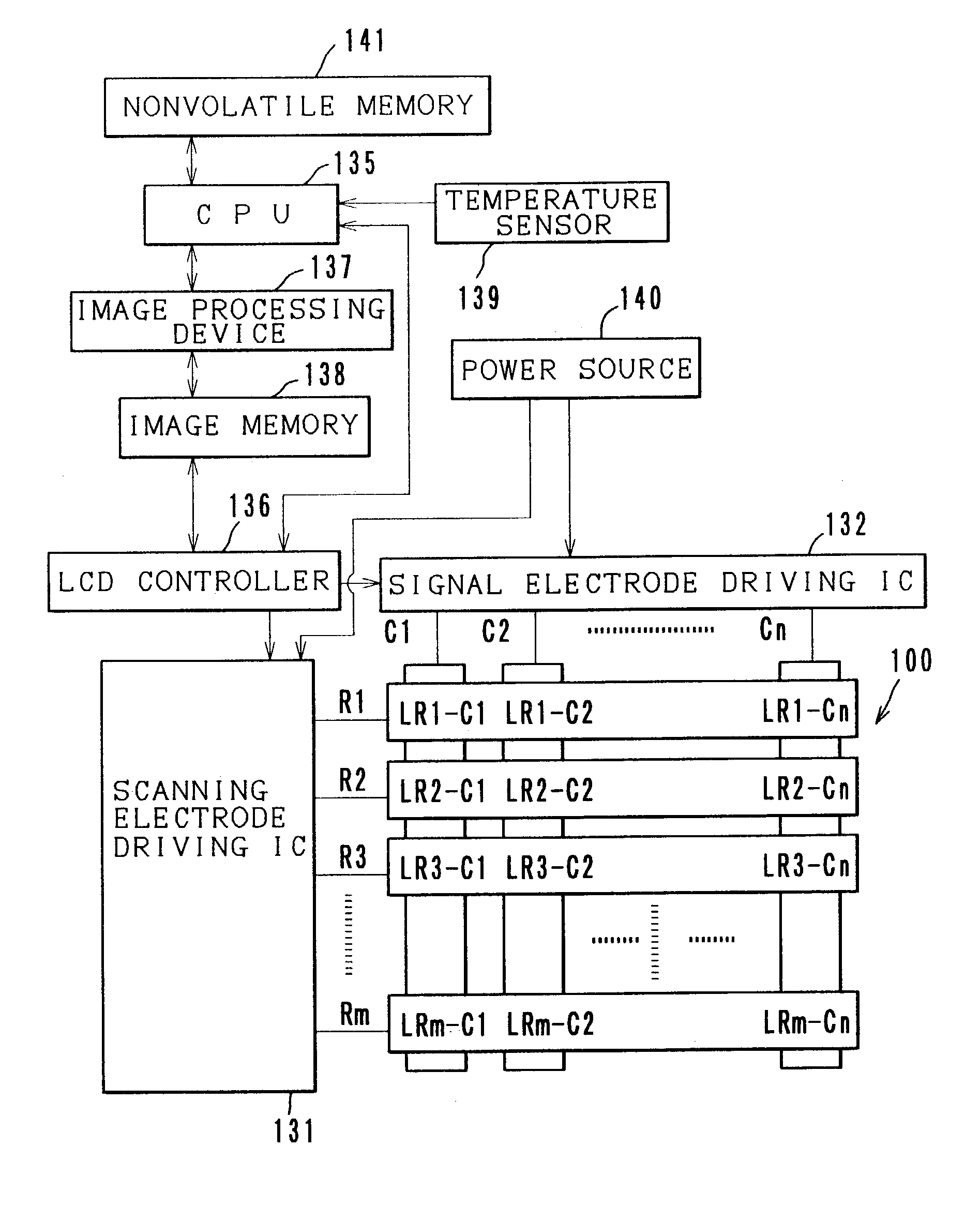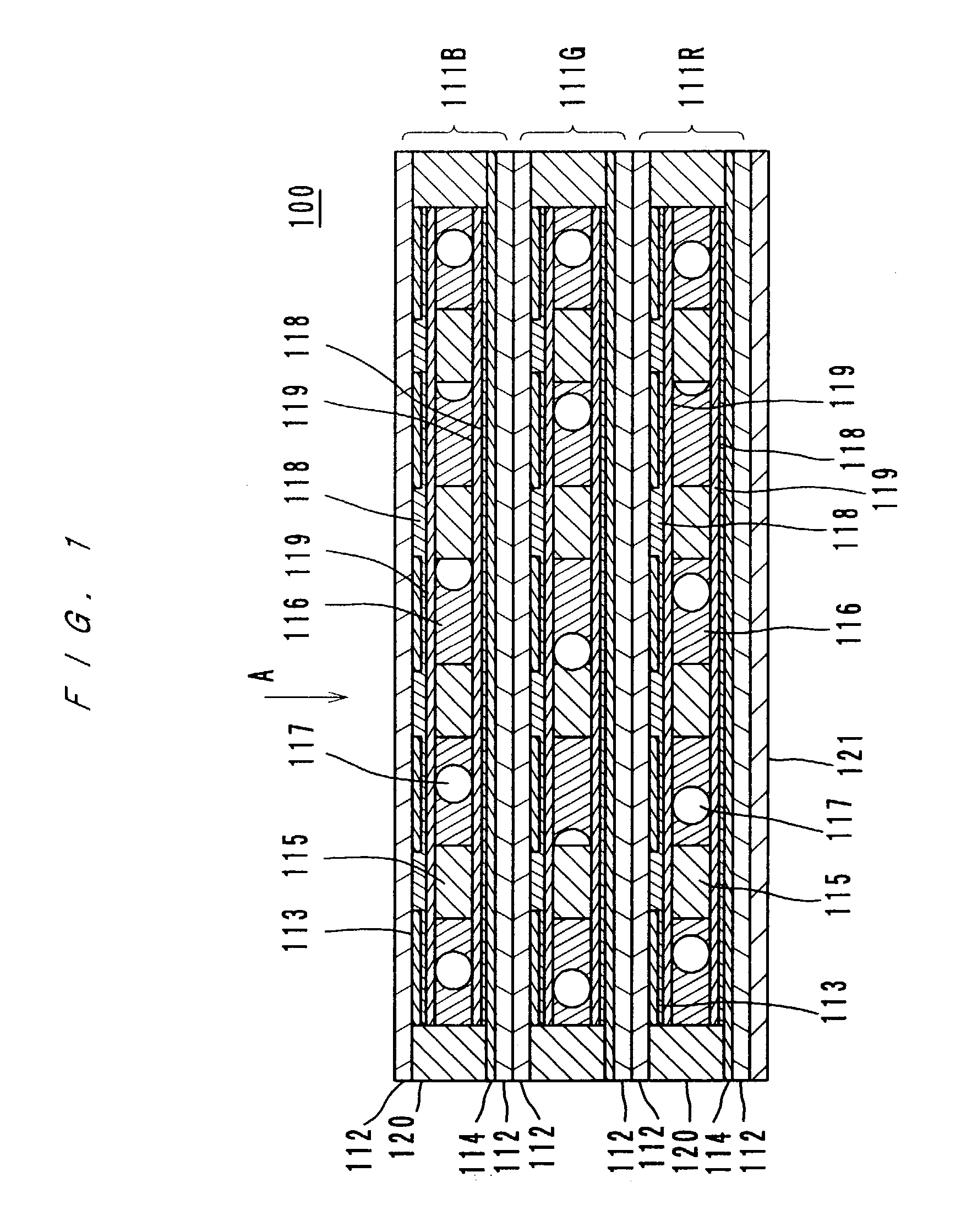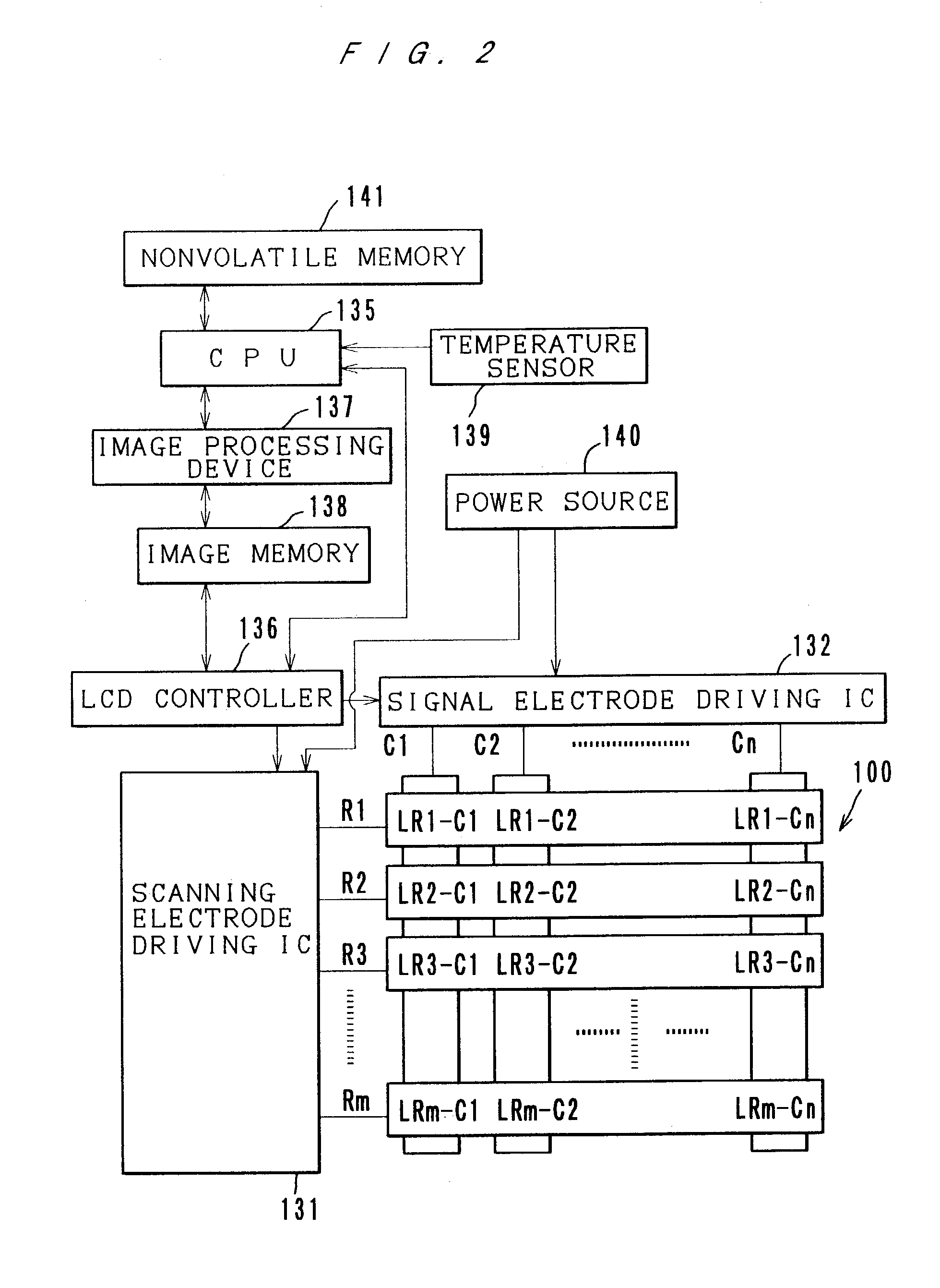Method and a device for driving a liquid crystal display, and a liquid crystal display apparatus
- Summary
- Abstract
- Description
- Claims
- Application Information
AI Technical Summary
Benefits of technology
Problems solved by technology
Method used
Image
Examples
example 2
Driving Example 2; See FIG. 12
[0091] Next, driving example 2 which adopts the delayed scanning mode is described referring to FIG. 12. The pulse waves shown in FIG. 12 indicate the same things as those in FIG. 8.
[0092] Like the driving example 1, the driving example 2 is to inhibit the power consumption from being high in a high temperature range while being based on the basic driving example. What is different from the driving example 1 is that the column signal during each delay step Td is set to a pulse voltage for a display of a specified intermediate tone. There are essentially no image data in the delay steps; however, by applying a pulse voltage for a display of a specified gray level during each delay step, density differences among scanning lines can be inhibited. In this case, the strength of crosstalk becomes even without regard to the positions of the scanning lines.
example 3
Driving Example 3; See FIG. 13
[0093] Next, driving example 3 which adopts the delayed scanning mode is described referring to FIG. 13. The pulse waves shown in FIG. 13 indicate the same things as those in FIG. 8.
[0094] Like the driving example 1, the driving example 3 is based on the basic driving example and is to inhibit the power consumption from being higher in a high temperature range. Another purpose of the driving example 3 is to avoid occurrences of ghost in the pixels on non-selected scanning lines. What is different from the driving example 1 is to delay the selection pulse application step of every scanning line by a time of two units (Tsp.times.2). Therefore, this driving example 3 is referred to as a 1-2 delay mode. In this example 3, Tsp / Ts=1 / 3. As is apparent from FIG. 13, the voltage applied to the signal electrode becomes an alternated pulse voltage only during the selection pulse application step and is kept 0 volt during the other steps.
[0095] FIG. 13 shows a case...
example 4
Driving Example 4; See FIG. 15
[0099] The driving example 4 has the same purposes as the driving example 3, and additionally, the driving example 4 is to shorten the scanning time. What is different from the driving example 3 is to delay the selection pulse application step of every scanning line by a time of three units (Tsp.times.3). Therefore, this is referred to as a 1-3 delay mode. In the driving example 3, Tsp / Ts=1 / 5. The time required for scanning one frame in this example 4 is {fraction (9 / 10)} of that in the driving example 3. In this driving example 4 also, the voltage applied to the signal electrode becomes an alternated pulse voltage only during the selection pulse application step and is kept 0 volt during the other steps.
[0100] Like FIG. 13, FIG. 15 shows a case of writing intermediate tones in LCD1 and LCD2 and writing the densest image (reflection) in LCD3 and LCD4. Focusing on the pixel LCD3, in this driving example 4 also, crosstalk does not occur during the steps A...
PUM
 Login to View More
Login to View More Abstract
Description
Claims
Application Information
 Login to View More
Login to View More - R&D
- Intellectual Property
- Life Sciences
- Materials
- Tech Scout
- Unparalleled Data Quality
- Higher Quality Content
- 60% Fewer Hallucinations
Browse by: Latest US Patents, China's latest patents, Technical Efficacy Thesaurus, Application Domain, Technology Topic, Popular Technical Reports.
© 2025 PatSnap. All rights reserved.Legal|Privacy policy|Modern Slavery Act Transparency Statement|Sitemap|About US| Contact US: help@patsnap.com



